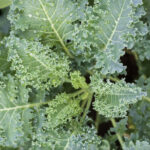
As the spring weather greets us, we leave behind the red wines that have warmed our winter and look forward to drinking fresher and lighter wines. There is no better way to start than by choosing the Noble white wines.
From their humble beginnings in northern Europe, these quaffs have spread across the globe and are grown in all temperate zones in every hemisphere. To fully enjoy what’s in their glass, a freshman oenophile should have a good understanding of what these wines are and how they have shaped our world.
The first of this trio is Chardonnay, which first was planted in the French village of Chablis by Cistercian monks sometime in the 12th century. To this day, the wines of Chablis are regarded as the most pure expression of the grape, due in part to the lack of oak used in fermentation.
Chardonnay is probably the most neutral of white wines in the way that it reflects growing conditions and climate—what the French call terroir. It is also easily influenced by the winemaker to achieve desirable results by use of certain yeasts, types of fermentation and even barrels. California and the Burgundy region in France are the main growing areas, but this savory quaff can be found around the globe, as well as in Pennsylvania. I once had an amazing Chard on the shores of Keuka Lake in New York. Chardonnay is also used in the Champagne region of France. To taste this white grape at its sparkling best, look for “blanc de blanc” on the label.
Sauvignon Blanc is another white grape that deserves our attention. With origins in southwest France, this “savage white” has been known throughout the Loire Valley and Bordeaux regions since the 16th century. Found growing wild and then cultivated, it makes the freshest wines of all the Noble grapes. In northern climates, the wines are slightly herbaceous, with notes of gooseberry and elderflower wrapped up in bracing acidity that makes it very food friendly. The New World wines, especially those from New Zealand, can be heavier with more tropical fruit and a certain grassiness. The quaffs from Chile are somewhere in between but definitely should be explored.
Riesling is a German grape that makes wines from bone dry to honey sweet. The first written account is from the Rhine valley in 1402, and these wines were some of the most expensive in the world in the early 19th century. The grape since has been grown with great results in Australia, New Zealand and the Pacific Northwest and is a hallmark of the Finger Lakes. A soft quaff with a combination of fruitiness, food-friendly acidity and low alcohol, it is the drink for all occasions. Reading a German riesling label can be a bit daunting with quality levels based on when the grapes are harvested. In order of increasing sweetness, these are kabinett, spatlese, auslese, beerenauslese, eiswein and trockenbeerenauslese. It is perhaps a confusing system, but it’s worth the effort for this Noble wine.
Keep sipping,
Steve
4709
Louis Latour Pouilly Fuisse
$29.99
“The wine shows a green-gold color and delicate aromas on the nose that are disarmingly seductive. On the palate, there is a round and full herbal fruitiness that complements the crisp acidity leading to a satisfying finish.”
–Producer notes
4743
Kim Crawford Sauvignon Blanc Marlborough
$15.99
“A fresh, juicy wine with vibrant acidity and plenty of weight and length on the palate. Ripe, tropical fruit flavor with passion fruit, melon and grapefruit. Pairs brilliantly with fresh oysters, asparagus, lobster or summer salads.”
–Winemaker notes
4500
Schmitt Sohne Spatlese Piesporter Michelsberg
$13.99
“This moderately full bodied wine is lush and rich with flavors of ripe apricots and peaches. The mouth feel is well balanced and firm, giving it an intense and lingering finish.”
– Winemaker’s Notes
Support quality local journalism. Become a Friend of TheBurg!





